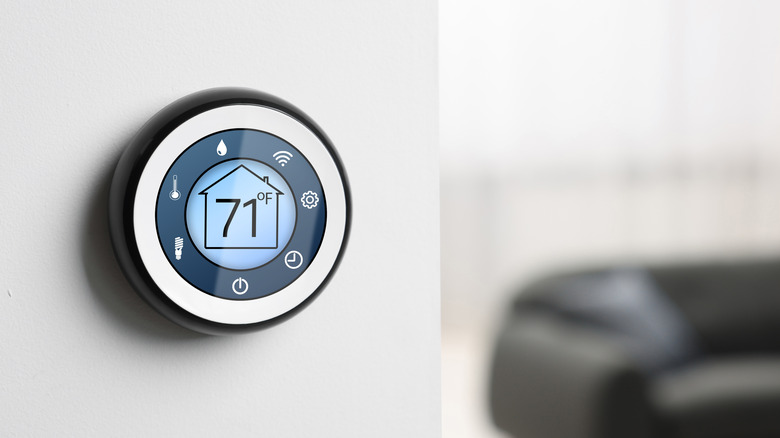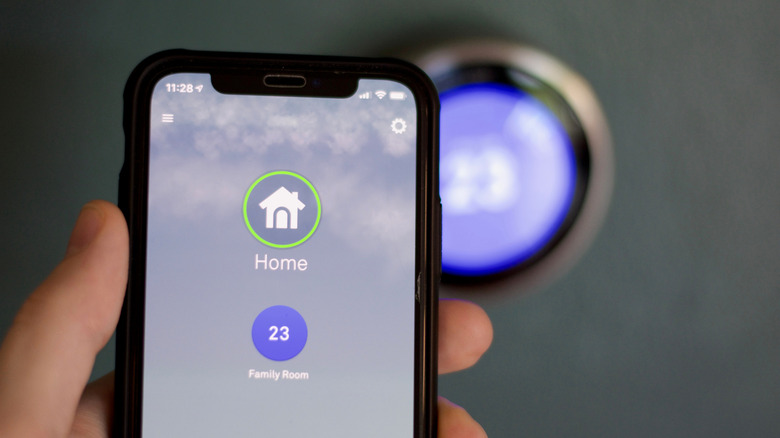How Do Smart Thermostats Work & What Happens If They Lose Internet Connection?
Slowly but surely, many of us are remaking our homes with smart devices. At the top of the list for many are smart thermostats, which offer benefits like automatically adjusting your home's heating and cooling settings without you having to do anything once they're up and running. Many smart thermostats promise to lower your energy bill, something that makes them even more attractive, especially if you're a budget-conscious consumer. What makes these Wi-Fi-enabled devices smart is that they're not static; instead, they learn from your behavior, respond to changing conditions, and can be controlled through apps or voice assistants.
Whether you're sleeping, working late at the office, or on your way back from vacation, a smart thermostat can make adjustments in real time to match your routine and manage your home's climate more efficiently than a traditional thermostat ever could. Since it's a Wi-Fi-connected device, you might wonder what happens if your internet connection goes down. After all, many of the features that might lead you to buy a smart thermostat rely on a steady Wi-Fi connection. Fortunately, your smart thermostat won't leave you out in the cold (or heat) if you lose your internet connection; it can still function, just with a few limitations, until the connection is restored.
How do smart thermostats work?
Smart thermostats come equipped with built-in sensors that monitor your home's ambient temperature, humidity, and in many models, occupancy or motion. The thermostat uses these sensors to monitor your home's temperature as well as determine whether anyone is home, which allows it to optimize your home's heating and cooling in a way that makes the most sense at the time. Like any device, some work better than others, as we explain in our list of ranking major smart thermostat brands.
Smart thermostats will typically connect to your home's HVAC system using the same wiring that traditional thermostats do. Still, before you buy one, you need to confirm that it's compatible with your home's HVAC system because not all support the wiring or voltage requirements smart thermostats need. Once you've installed a smart thermostat, it'll start collecting data about your daily routine and habits, like what temperature you prefer in the morning versus at night, when the house is empty, and how long it takes to heat or cool different parts of your home. It'll use machine learning algorithms to analyze the data it's gathered to build a schedule that adjusts as it gets to know your habits.
Because it's a Wi-Fi-enabled device, when you're not at home, you'll still be able to monitor your thermostat remotely using a smartphone app. You can check in and adjust your home's temperature as needed. However, you shouldn't overdo it or you may end up doing things that make your home's smart thermostat less efficient than it would be if you just left it alone.
What happens to a smart thermostat during an internet outage?
Just like your home's smart switches work without Wi-Fi, its smart thermostat will too. That's because these devices are designed to maintain their essential functions even when your home's Wi-Fi connection goes down. While you won't be able to use some of your smart thermostat's advanced features if it loses its internet connection, the core heating and cooling operations will keep working. It'll basically revert to a regular thermostat, maintaining its current settings and allowing you to adjust the temperature manually on the device itself.
What you won't be able to do with your smart thermostat if it can't connect to Wi-Fi is control it remotely through an app or use a voice assistant like Alexa or Google Assistant to control it. You'll also miss out on real-time updates, notifications, and energy usage reports, and won't be able to use features like geofencing, adjusting humidity levels, or modifying your schedule remotely until your internet service is restored. When your internet connection returns, your smart thermostat should automatically connect to the network and pick up right where it left off, resuming full app control, updates, and integration with other smart home devices.


